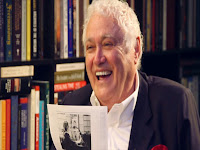Jane Roland Martin is a remarkable woman as she widened up educational theory in line with those such as Dewey and Illich. yet her real contribution is in the many issues around women in education. Her views are inclusive but above all expansive.
1. Women ignored
1. Women ignored
She saw the role of women as a largely
unexamined issue in education. Women had for centuries been excluded from
access to education but even recently, ignored in teaching, schooling, higher
education.
2, New sources
As women have been denied access to education, excluded from education, educational institutions and the vehicles of educational theorising, she recommends that we must look to wider sources for the views, in magazines, pamphlets, more general literature and the wider media landscape.
3. The educational ideal ignores women
The definition of education itself, Martin claims, has neglected
women. Work by women and work about women are often ignored, with the role of
women in education hugely under researched and understood. This, she thinks, distorts and misrepresents
reality. The very idea of an educated person or educational ideal must take women into account.
4. Spectator knowledge
Martin excavated, in an anthropological manner, hidden assumptions and problems within education, especially the curriculum of fixed cultural subjects and knowledge, as well as male cognitive perspectives, at the expense of other disciplines and real-world knowledge and skills. She saw curricula and institutions, that focus largely on ‘spectator’ knowledge, as promoting a one-sided view of education. In particular she came to focus on gender through feminism.
5. Education to include domestic context
For Martin, the school as home should be far more relevant
to life outside of school, especially the domestic environment of the home. It
needs to draw back from a curriculum that focuses largely on ‘spectator’
knowledge. The role of mothering, issues around the ghettoisation of women on
professions such as teaching and nursing, as well as the insensitivity to
women’s often difficult role at work and at home, led her to a radical stance
on taking action across a broad front to rebalance the educational system, in
response to this analysis.
6. Multiple Educational
Agency
Yet the education debate so often focuses solely on schools and schooling. Dewey and many others have downplayed the role of school in the development of young people. For Martin this narrow and obsessive emphasis on schools and schooling may result in cultural miseducation. Parents, family, community, church, youth groups, sports
clubs, the media, internet and other institutions, even the education of
animals, have played roles in education long before schools and schooling were
common. Martin has an expansive view of learning as a process of Multiple Educational Agency. To focus just on schools, which are notoriously difficult to change, is to ignore the very many other opportunities to educate
7. Learning happens everywhere
Above all she reconceptualises education as something that is all-pervasive, often informal, through many agents in many different contexts. The idea that education is a fundamental aspect of life that lasts for the whole of one's life underpins her entire re-evaluation.
Criticism
Critics have claimed that her work is so general that it is
difficult to either object or test. Others claim that her widening education to
include, for example animals, is taking the inclusivity idea too far. Others, while agreeing with Martin’s
descriptive work, have argued that Martin’s prescriptive recommendations around
the reconstitution of education are either impractical, simply reinforce
inequalities or replace them with new ones. Her work certainly aroused debate
and passions.
Conclusion
Martin may not be regarded as the only or even leading voice
of feminism in education but her reputation as a dogged researcher, determined
to re-establish historical wrongs and implement future rights is unarguable.
The re-evaluation of Plato, Rousseau, James, Wollstonecraft, Montessori,
Beecher and Gilman is one contribution. Stimulating feminist and gender debate
and research is another. Widening the view of education beyond schooling is
another. Above all she reconceptualises education as something that is
all-pervasive, often informal, through many agents in many different contexts.
Bibliography
Martin, J.
R. (1985). Reclaiming a Conversation: The Ideal of the Educated Woman. New
Haven: Yale University Press.
Martin, J.
R. (1992). The Schoolhome: Rethinking Schools for Changing Families. Cambridge,
MA: Harvard University Press, 1992.
Martin, J.
R. (1994). Changing the Educational Landscape: Philosophy, Women, and
Curriculum. New York: Routledge, 1994.
Martin, J.
R. (2000). Coming of Age in Academe: Rekindling Women's Hopes and Reforming the
Academy. New York: Routledge.
Martin, J.
R. (2002). Cultural Miseducation: In Search of a Democratic Solution. New York:
Teachers College Press.
Martin, J.
R. (2011). Education Reconfigured:
Routledge.



